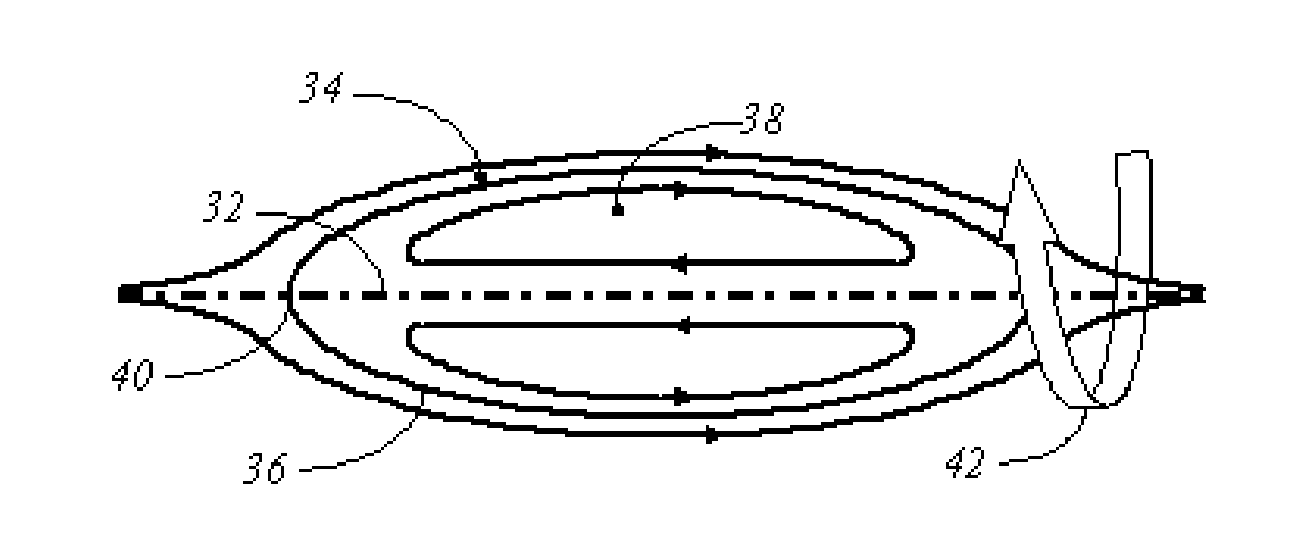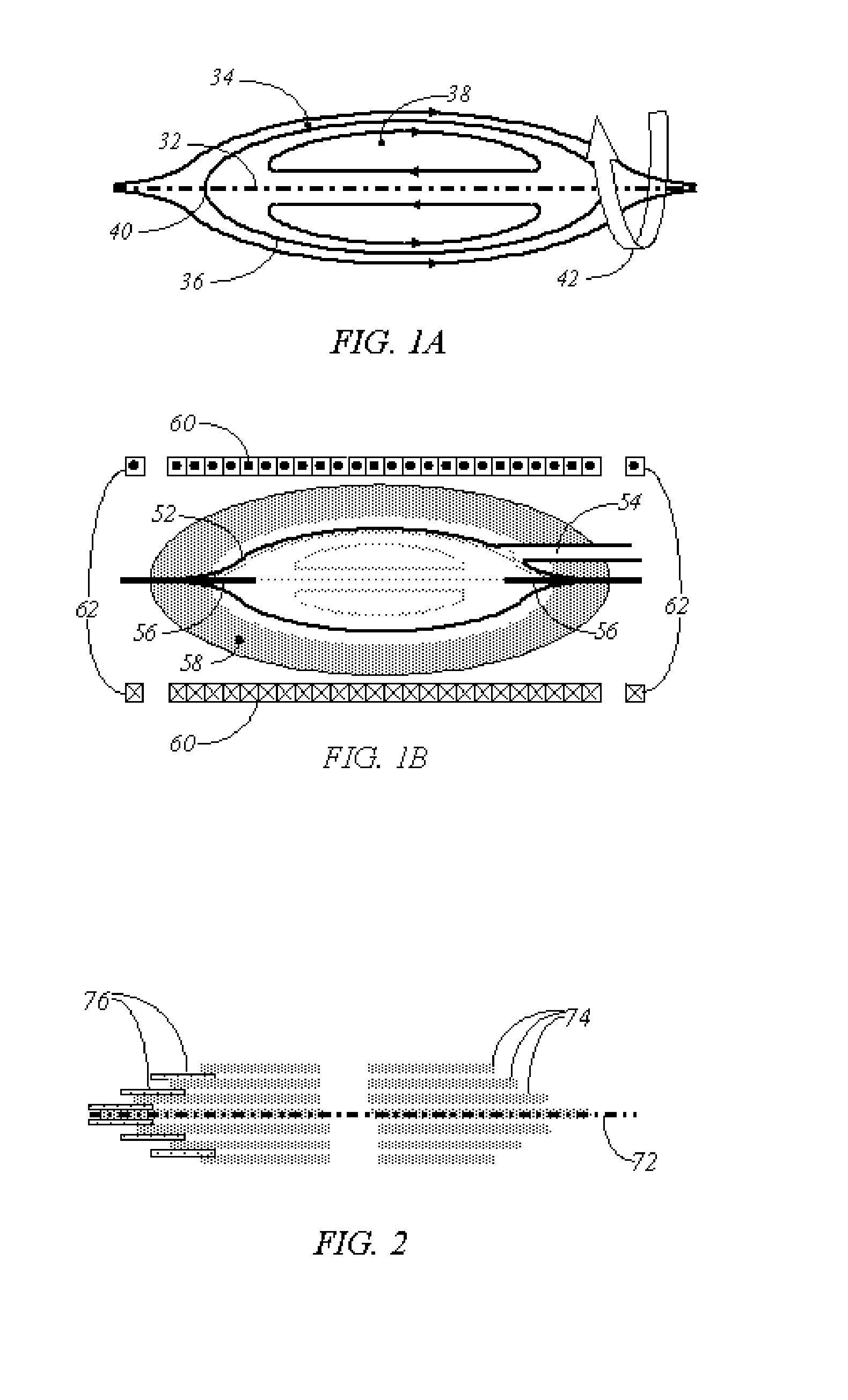Plasma Centrifuge Heat Engine Beam Fusion Reactor
a technology of fusion reactor and centrifuge, which is applied in nuclear reactors, nuclear engineering, greenhouse gas reduction, etc., can solve the problems of low reactivity and associated power density, unable to withstand energetic neutrons, and known processes for fusion energy release require extreme conditions, so as to reduce the temperature of plasma, increase the density, and increase the power density
- Summary
- Abstract
- Description
- Claims
- Application Information
AI Technical Summary
Benefits of technology
Problems solved by technology
Method used
Image
Examples
Embodiment Construction
[0033]A first preferred embodiment accomplishes a heat engine cycle in a continuous plasma state. The required open field line magnetic configuration is produced by a field-reversed configuration. The magnetic configuration for this case is as shown in FIG. 1A. Since the entire system is rotationally symmetric, arrangement and operation is shown entirely by sections which correspond to cuts through a plane that contains the system axis. The axis of symmetry 32 forms the centerline of the system. An open field region 34 is separated from a closed field region 38 by the separatrix 36. The open field lines of interest are those which pass very close to the axis near points 40 on the axis at either end of the configuration where the magnetic field vanishes (spindle cusp points). The direction of the magnetic field is indicated along various field lines, while the direction of rotation is shown by the heavy arrow 42. Open-field-line plasma is continuously confined by centrifugal force, w...
PUM
 Login to View More
Login to View More Abstract
Description
Claims
Application Information
 Login to View More
Login to View More - R&D
- Intellectual Property
- Life Sciences
- Materials
- Tech Scout
- Unparalleled Data Quality
- Higher Quality Content
- 60% Fewer Hallucinations
Browse by: Latest US Patents, China's latest patents, Technical Efficacy Thesaurus, Application Domain, Technology Topic, Popular Technical Reports.
© 2025 PatSnap. All rights reserved.Legal|Privacy policy|Modern Slavery Act Transparency Statement|Sitemap|About US| Contact US: help@patsnap.com



